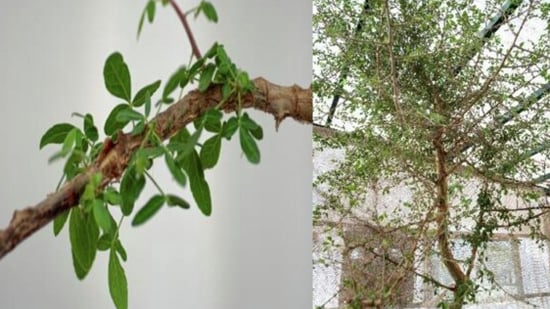1,000-year-old seed used to grow ancient Biblical tree, scientists claim it may cure cancer
The seed, which was found during an archaeological excavation in the 1980s, is believed to have belonged to trees mentioned in the Bible
A mysterious ancient seed, dating back to a time between 993 AD and 1202, has grown into a 10 feet tall tree nearly 1,000 years after it came into existence. The seed, found in the Judean Desert between the West Bank and Israel, is likely to have belonged to a lineage of trees mentioned in the Bible, scientists say.

Named "Sheba", after a biblical queen, the ancient seed took 14 years to grow into a tree after it was discovered during an excavation in a cave in the late 1980s. Scientists believe the seed belongs to a now-extinct species of trees that existed in the region which is modern-day Israel, Palestine and Jordan. (Also Read: 10-year-old’s curiosity leads to discovery of ancient dinosaur footprints on a beach)
Does it have healing powers?
Scientists claim the fully-grown tree could be the source of "tsori" (meaning balm) - a resin mentioned in the Bible for its healing powers. They claim the revival of the tree can unravel the mystery behind the Biblical balm.
The tree is also related to the Commiphora species that produce fragrant resins which some believe to be the source of another Biblical perfume called "Balm of Gilead".
"Our initial hypothesis was that 'Sheba' might be a candidate for the historical 'Judean Balsam,'" the scientists, but added that they refuted the idea as the tree lacks aromatic properties.
Anti-cancer properties
Sheba has shown a range of medicinal properties. Chemical analysis of the ancient tree's leaves reveals that it contains active compounds with anti-inflammatory and anti-cancer properties.
Its stems and leaves have antioxidant and skin-smoothing properties.
"We believe these findings support our second hypothesis, that 'Sheba' … may represent an extinct (or at least extirpated) [lineage] once native to this region, whose resin 'tsori' mentioned in Biblical texts was valuable, associated with healing but not described as fragrant," scientists said.
After performing DNA, chemical and radiocarbon analyses of the tree, scientists have found that it belongs to the family of myrrh and frankincense, two compounds also mentioned in the Bible and closely associated with Jesus.
(Also Read: Nagaland’s rhododendron tree impressed Anand Mahindra. He says ‘it’s worth a visit’)
Can more ancient trees be grown?
While it is associated with nearly 200 living plant species, scientists are unclear about the species of the Sheba plant. In 14 years, the tree has not flowered or produced 'reproductive material' that could be studied by scientists to understand its properties.
"If Judean Balsam survives today as an extant Commiphora species there remains the possibility that scientists have not yet recognised it," scientists said.






